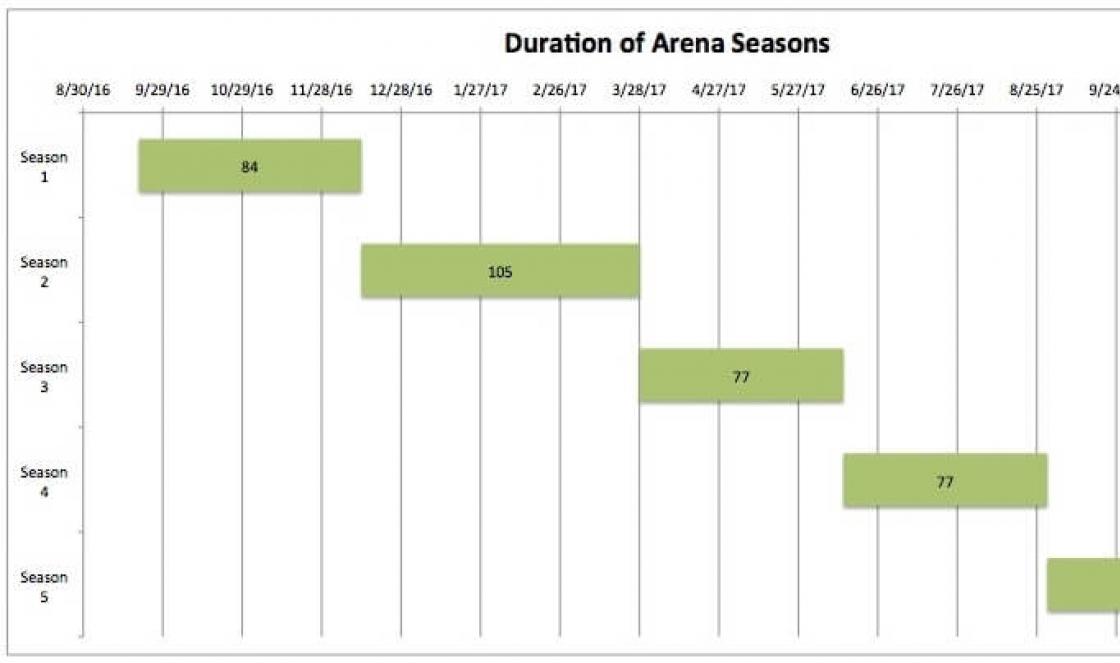Even function.
Even is a function whose sign does not change when the sign changes x.
x equality holds f(–x) = f(x). Sign x does not affect the sign y.
The graph of an even function is symmetrical about the coordinate axis (Fig. 1).
Examples of an even function:
y=cos x
y = x 2
y = –x 2
y = x 4
y = x 6
y = x 2 + x
Explanation:
Let's take the function y = x 2 or y = –x 2 .
For any value x the function is positive. Sign x does not affect the sign y. The graph is symmetrical about the coordinate axis. This is an even function.
Odd function.
Odd is a function whose sign changes when the sign changes x.
In other words, for any value x equality holds f(–x) = –f(x).
The graph of an odd function is symmetrical with respect to the origin (Fig. 2).
Examples of odd function:
y= sin x
y = x 3
y = –x 3
Explanation:
Let's take the function y = – x 3 .
All meanings at it will have a minus sign. That is a sign x influences the sign y. If the independent variable is a positive number, then the function is positive, if the independent variable is a negative number, then the function is negative: f(–x) = –f(x).
The graph of the function is symmetrical about the origin. This is an odd function.
Properties of even and odd functions:
NOTE:
Not all functions are even or odd. There are functions that do not obey such gradation. For example, the root function at = √X does not apply to either even or odd functions (Fig. 3). When listing the properties of such functions, an appropriate description should be given: neither even nor odd.
Periodic functions.
As you know, periodicity is the repetition of certain processes at a certain interval. The functions that describe these processes are called periodic functions. That is, these are functions in whose graphs there are elements that repeat at certain numerical intervals.
Function is one of the most important mathematical concepts. Function - variable dependency at from variable x, if each value X matches a single value at. Variable X called the independent variable or argument. Variable at called the dependent variable. All values of the independent variable (variable x) form the domain of definition of the function. All values that the dependent variable takes (variable y), form the range of values of the function.
Function graph call the set of all points of the coordinate plane, the abscissas of which are equal to the values of the argument, and the ordinates are equal to the corresponding values of the function, that is, the values of the variable are plotted along the abscissa axis x, and the values of the variable are plotted along the ordinate axis y. To graph a function, you need to know the properties of the function. The main properties of the function will be discussed below!
To build a graph of a function, we recommend using our program - Graphing functions online. If you have any questions while studying the material on this page, you can always ask them on our forum. Also on the forum they will help you solve problems in mathematics, chemistry, geometry, probability theory and many other subjects!
Basic properties of functions.
1) Function domain and function range.
The domain of a function is the set of all valid valid argument values x(variable x), for which the function y = f(x) determined.
The range of a function is the set of all real values y, which the function accepts.
In elementary mathematics, functions are studied only on the set of real numbers.
2) Function zeros.
Values X, at which y=0, called function zeros. These are the abscissas of the points of intersection of the function graph with the Ox axis.
3) Intervals of constant sign of a function.
Intervals of constant sign of a function are such intervals of values x, on which the function values y either only positive or only negative are called intervals of constant sign of the function.

4) Monotonicity of the function.
An increasing function (in a certain interval) is a function in which a larger value of the argument from this interval corresponds to a larger value of the function.
A decreasing function (in a certain interval) is a function in which a larger value of the argument from this interval corresponds to a smaller value of the function.
5) Even (odd) function.
An even function is a function whose domain of definition is symmetrical with respect to the origin and for any X f(-x) = f(x). The graph of an even function is symmetrical about the ordinate.
An odd function is a function whose domain of definition is symmetrical with respect to the origin and for any X from the domain of definition the equality is true f(-x) = - f(x). The graph of an odd function is symmetrical about the origin.
Even function
1) The domain of definition is symmetrical with respect to the point (0; 0), that is, if the point a belongs to the domain of definition, then the point -a also belongs to the domain of definition.
2) For any value x f(-x)=f(x)
3) The graph of an even function is symmetrical about the Oy axis.
Odd function has the following properties:
1) The domain of definition is symmetrical about the point (0; 0).
2) for any value x, belonging to the domain of definition, the equality f(-x)=-f(x)
3) The graph of an odd function is symmetrical with respect to the origin (0; 0).
Not every function is even or odd. Functions general view are neither even nor odd.



6) Limited and unlimited functions.
A function is called bounded if there is a positive number M such that |f(x)| ≤ M for all values of x. If such a number does not exist, then the function is unlimited.
7) Periodicity of the function.
A function f(x) is periodic if there is a non-zero number T such that for any x from the domain of definition of the function the following holds: f(x+T) = f(x). This smallest number is called the period of the function. All trigonometric functions are periodic. (Trigonometric formulas).
Function f is called periodic if there is a number such that for any x from the domain of definition the equality f(x)=f(x-T)=f(x+T). T is the period of the function.
Every periodic function has an infinite number of periods. In practice, the smallest positive period is usually considered.
The values of a periodic function are repeated after an interval equal to the period. This is used when constructing graphs.

Function zeros
The zero of a function is the value X, at which the function turns to 0, that is, f(x)=0.
Zeros are the points of intersection of the function graph with the axis Oh.
Function parity
A function is called even if for any X from the domain of definition the equality f(-x) = f(x) holds 
An even function is symmetrical about the axis OU
Odd parity function
A function is called odd if for any X from the domain of definition the equality f(-x) = -f(x) holds. 
An odd function is symmetric about the origin.
A function that is neither even nor odd is called a general function. 
Increasing function
A function f(x) is said to be increasing if a larger value of the argument corresponds to a larger value of the function, i.e. x 2 >x 1 → f(x 2)>f(x 1) 
Descending function
A function f(x) is called decreasing if a larger value of the argument corresponds to a smaller value of the function, i.e. x 2 >x 1 → f(x 2) 
Intervals over which the function either only decreases or only increases are called intervals of monotony. The function f(x) has 3 intervals of monotonicity:
(-∞ x 1), (x 1 , x 2), (x 3 ; +∞) 
Find intervals of monotonicity using the service Intervals of increasing and decreasing function
Local maximum
Dot x 0 is called a local maximum point if for any X from the vicinity of a point x 0 the inequality holds: f(x 0) > f(x) 
Local minimum
Dot x 0 is called a local minimum point if for any X from the vicinity of a point x 0 inequality holds: f(x 0)< f(x).

Local maximum points and local minimum points are called local extremum points. 
x 1 , x 2 - local extremum points.
Function frequency
The function f(x) is called periodic, with a period T, if for any X the equality f(x+T) = f(x) holds. 
Intervals of sign constancy
Intervals on which the function is either only positive or only negative are called intervals of constant sign. 
f(x)>0 for x∈(x 1 , x 2)∪(x 2 , +∞), f(x)<0 при x∈(-∞,x 1)∪(x 1 , x 2)
Continuity of function
A function f(x) is called continuous at a point x 0 if the limit of the function as x → x 0 is equal to the value of the function at this point, i.e. ![]() .
.

Break points
The points at which the continuity condition is violated are called function break points. 
x 0- break point.
General scheme for plotting functions
1. Find the domain of definition of the function D(y).2. Find the points of intersection of the graph of functions with the coordinate axes.
3. Examine the function for even or odd.
4. Examine the function for periodicity.
5. Find monotonicity intervals and extremum points of the function.
6. Find the convexity intervals and inflection points of the function.
7. Find the asymptotes of the function.
8. Based on the research results, construct a graph.
Example: Explore the function and plot it: y = x 3 – 3x
8) Based on the results of the study, we will plot the function: 
Definition 1. The function is called even
(odd
), if together with each variable value  meaning - X also belongs
meaning - X also belongs  and the equality holds
and the equality holds
Thus, a function can be even or odd only if its domain of definition is symmetrical about the origin of coordinates on the number line (number X And - X belong at the same time  ). For example, the function
). For example, the function  is neither even nor odd, since its domain of definition
is neither even nor odd, since its domain of definition  not symmetrical about the origin.
not symmetrical about the origin.
Function  even, because
even, because  symmetrical about the origin and.
symmetrical about the origin and.
Function  odd, because
odd, because  And
And  .
.
Function  is not even and odd, since although
is not even and odd, since although  and is symmetrical with respect to the origin, equalities (11.1) are not satisfied. For example,.
and is symmetrical with respect to the origin, equalities (11.1) are not satisfied. For example,.
The graph of an even function is symmetrical about the axis OU, because if the point 
 also belongs to the schedule. The graph of an odd function is symmetrical about the origin, since if
also belongs to the schedule. The graph of an odd function is symmetrical about the origin, since if  belongs to the graph, then the point
belongs to the graph, then the point  also belongs to the schedule.
also belongs to the schedule.
When proving whether a function is even or odd, the following statements are useful.
Theorem 1. a) The sum of two even (odd) functions is an even (odd) function.
b) The product of two even (odd) functions is an even function.
c) The product of an even and odd function is an odd function.
d) If f– even function on the set X, and the function g
defined on the set  , then the function
, then the function  – even.
– even.
d) If f– odd function on the set X, and the function g
defined on the set  and even (odd), then the function
and even (odd), then the function  – even (odd).
– even (odd).
Proof. Let us prove, for example, b) and d).
b) Let  And
And  – even functions. Then, therefore. The case of odd functions is treated similarly
– even functions. Then, therefore. The case of odd functions is treated similarly  And
And  .
.
d) Let f is an even function. Then.
The remaining statements of the theorem can be proved in a similar way. The theorem has been proven.
Theorem 2. Any function  , defined on the set X, symmetrical about the origin, can be represented as a sum of even and odd functions.
, defined on the set X, symmetrical about the origin, can be represented as a sum of even and odd functions.
Proof. Function  can be written in the form
can be written in the form
 .
.
Function  – even, because
– even, because  , and the function
, and the function  – odd, because. Thus,
– odd, because. Thus,  , Where
, Where  – even, and
– even, and  – odd functions. The theorem has been proven.
– odd functions. The theorem has been proven.
Definition 2. Function  called periodic
, if there is a number
called periodic
, if there is a number  , such that for any
, such that for any  numbers
numbers  And
And  also belong to the domain of definition
also belong to the domain of definition  and the equalities are satisfied
and the equalities are satisfied
Such a number T called period
functions  .
.
From Definition 1 it follows that if T– period of the function  , then the number – T Same
is the period of the function
, then the number – T Same
is the period of the function
 (since when replacing T on - T equality is maintained). Using the method of mathematical induction it can be shown that if T– period of the function f, then
(since when replacing T on - T equality is maintained). Using the method of mathematical induction it can be shown that if T– period of the function f, then  , is also a period. It follows that if a function has a period, then it has infinitely many periods.
, is also a period. It follows that if a function has a period, then it has infinitely many periods.
Definition 3. The smallest of the positive periods of a function is called its main period.
Theorem 3. If T– main period of the function f, then the remaining periods are multiples of it.
Proof. Let us assume the opposite, that is, that there is a period  functions f
(
functions f
( >0), not multiple T. Then, dividing
>0), not multiple T. Then, dividing  on T with the remainder, we get
on T with the remainder, we get  , Where
, Where  . That's why
. That's why
that is  – period of the function f, and
– period of the function f, and  , and this contradicts the fact that T– main period of the function f. The statement of the theorem follows from the resulting contradiction. The theorem has been proven.
, and this contradicts the fact that T– main period of the function f. The statement of the theorem follows from the resulting contradiction. The theorem has been proven.
It is well known that trigonometric functions are periodic. Main period  And
And  equals
equals  ,
, And
And  . Let's find the period of the function
. Let's find the period of the function  . Let
. Let  - the period of this function. Then
- the period of this function. Then
(because  .
.
 oror
oror  .
.
Meaning T, determined from the first equality, cannot be a period, since it depends on X, i.e. is a function of X, and not a constant number. The period is determined from the second equality:  . There are infinitely many periods, with
. There are infinitely many periods, with  the smallest positive period is obtained at
the smallest positive period is obtained at  :
: . This is the main period of the function
. This is the main period of the function  .
.
An example of a more complex periodic function is the Dirichlet function

Note that if T is a rational number, then  And
And  are rational numbers for rational X and irrational when irrational X. That's why
are rational numbers for rational X and irrational when irrational X. That's why

for any rational number T. Therefore, any rational number T is the period of the Dirichlet function. It is clear that this function does not have a main period, since there are positive rational numbers that are arbitrarily close to zero (for example, a rational number can be made by choosing n arbitrarily close to zero).
Theorem 4. If the function f
defined on the set X and has a period T, and the function g
defined on the set  , then a complex function
, then a complex function  also has a period T.
also has a period T.
Proof. We have, therefore
that is, the statement of the theorem is proven.
For example, since cos
x
has a period  , then the functions
, then the functions  have a period
have a period  .
.
Definition 4. Functions that are not periodic are called non-periodic .
Hide Show
Methods for specifying a function
Let the function be given by the formula: y=2x^(2)-3. By assigning any values to the independent variable x, you can calculate, using this formula, the corresponding values of the dependent variable y. For example, if x=-0.5, then, using the formula, we find that the corresponding value of y is y=2 \cdot (-0.5)^(2)-3=-2.5.
Taking any value taken by the argument x in the formula y=2x^(2)-3, you can calculate only one value of the function that corresponds to it. The function can be represented as a table:
| x | −2 | −1 | 0 | 1 | 2 | 3 |
| y | −4 | −3 | −2 | −1 | 0 | 1 |
Using this table, you can see that for the argument value −1 the function value −3 will correspond; and the value x=2 will correspond to y=0, etc. It is also important to know that each argument value in the table corresponds to only one function value.
More functions can be specified using graphs. Using a graph, it is established which value of the function correlates with a certain value x. Most often, this will be an approximate value of the function.
Even and odd function
The function is even function, when f(-x)=f(x) for any x from the domain of definition. Such a function will be symmetrical about the Oy axis.
The function is odd function, when f(-x)=-f(x) for any x from the domain of definition. Such a function will be symmetric about the origin O (0;0) .
The function is not even, neither odd and is called general function, when it does not have symmetry about the axis or origin.
Let us examine the following function for parity:
f(x)=3x^(3)-7x^(7)
D(f)=(-\infty ; +\infty) with a symmetric domain of definition relative to the origin. f(-x)= 3 \cdot (-x)^(3)-7 \cdot (-x)^(7)= -3x^(3)+7x^(7)= -(3x^(3)-7x^(7))= -f(x).
This means that the function f(x)=3x^(3)-7x^(7) is odd.
Periodic function
The function y=f(x) , in the domain of which the equality f(x+T)=f(x-T)=f(x) holds for any x, is called periodic function with period T \neq 0 .
Repeating the graph of a function on any segment of the x-axis that has length T.
The intervals where the function is positive, that is, f(x) > 0, are segments of the abscissa axis that correspond to the points of the function graph lying above the abscissa axis.
f(x) > 0 on (x_(1); x_(2)) \cup (x_(3); +\infty)

Intervals where the function is negative, that is, f(x)< 0 - отрезки оси абсцисс, которые отвечают точкам графика функции, лежащих ниже оси абсцисс.
f(x)< 0 на (-\infty; x_(1)) \cup (x_(2); x_(3))

Limited function
Bounded from below It is customary to call a function y=f(x), x \in X when there is a number A for which the inequality f(x) \geq A holds for any x \in X .
An example of a function bounded from below: y=\sqrt(1+x^(2)) since y=\sqrt(1+x^(2)) \geq 1 for any x .
Bounded from above a function y=f(x), x \in X is called when there is a number B for which the inequality f(x) \neq B holds for any x \in X .
An example of a function bounded below: y=\sqrt(1-x^(2)), x \in [-1;1] since y=\sqrt(1+x^(2)) \neq 1 for any x \in [-1;1] .
Limited It is customary to call a function y=f(x), x \in X when there is a number K > 0 for which the inequality \left | f(x)\right | \neq K for any x \in X .
An example of a limited function: y=\sin x is limited on the entire number axis, since \left | \sin x \right | \neq 1.
Increasing and decreasing function
It is customary to speak of a function that increases on the interval under consideration as increasing function then, when a larger value of x corresponds to a larger value of the function y=f(x) . It follows that taking two arbitrary values of the argument x_(1) and x_(2) from the interval under consideration, with x_(1) > x_(2) , the result will be y(x_(1)) > y(x_(2)).
A function that decreases on the interval under consideration is called decreasing function when a larger value of x corresponds to a smaller value of the function y(x) . It follows that, taking from the interval under consideration two arbitrary values of the argument x_(1) and x_(2) , and x_(1) > x_(2) , the result will be y(x_(1))< y(x_{2}) .
Function Roots It is customary to call the points at which the function F=y(x) intersects the abscissa axis (they are obtained by solving the equation y(x)=0).
a) If for x > 0 an even function increases, then it decreases for x< 0

b) When an even function decreases at x > 0, then it increases at x< 0
.png)
c) When an odd function increases at x > 0, then it also increases at x< 0

d) When an odd function decreases for x > 0, then it will also decrease for x< 0
.png)
Extrema of the function
Minimum point of the function y=f(x) is usually called a point x=x_(0) whose neighborhood will have other points (except for the point x=x_(0)), and for them the inequality f(x) > f will then be satisfied (x_(0)) . y_(min) - designation of the function at the min point.
Maximum point of the function y=f(x) is usually called a point x=x_(0) whose neighborhood will have other points (except for the point x=x_(0)), and for them the inequality f(x) will then be satisfied< f(x^{0}) . y_{max} - обозначение функции в точке max.
Prerequisite
According to Fermat’s theorem: f"(x)=0 when the function f(x) that is differentiable at the point x_(0) will have an extremum at this point.
Sufficient condition
- When the derivative changes sign from plus to minus, then x_(0) will be the minimum point;
- x_(0) - will be a maximum point only when the derivative changes sign from minus to plus when passing through the stationary point x_(0) .
The largest and smallest value of a function on an interval
Calculation steps:
- The derivative f"(x) is sought;
- Stationary and critical points of the function are found and those belonging to the segment are selected;
- The values of the function f(x) are found at stationary and critical points and ends of the segment. The smaller of the results obtained will be the smallest value of the function, and more - the largest.





